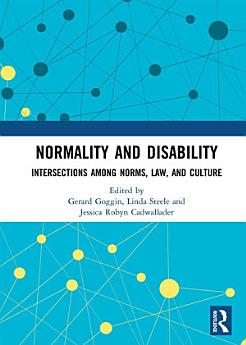Normality and Disability: Intersections among Norms, Law, and Culture
About this ebook
This pioneering collection explores the place of law in political, social, scientific and biomedical developments relating to disability and other categories of ‘abnormality’. The contributors show how law produces cultural meanings, norms, representations, artefacts and expressions of disability, abnormality and normality, as well as how law responds to and is constituted by cultures of disability. The collection traverses a range of contemporary legal and political issues including human rights, mercy killing, reproductive technologies, hate crime, policing, immigration and disability housing. It also explores the impact and ongoing legacies of historical practices such as eugenics and deinstitutionalization.
Of interest to a wide range of scholars working on normality and law, the book also creates an opening for critical scholars and activists engaged with other marginalized and denigrated categories, notably contesting institutional violence in the context of settler colonialism, neoliberalism and imperialism, to engage more richly and politically with disability. This book was originally published as a special issue of the Continuum journal.








